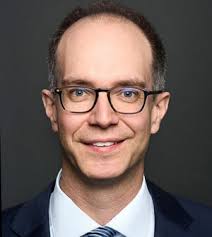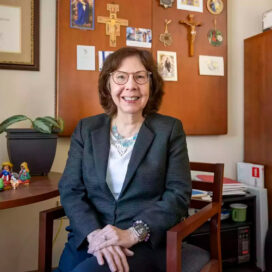The best executive MBAs
Published: October 24, 2005 / Author: Louis York
With fewer companies footing the bill, students’ needs have changed — and winning schools are meeting that challenge
Heidi A. Voorhees had had enough of nonprofits. After more than three years as senior director for the Defense Research Institute, a Chicago association of defense attorneys, she was ready to launch a career in the for-profit world. She knew she would need an MBA, but taking two years off to get one was financially out of the question. So two years ago, at 33, she applied to the executive MBA program at Northwestern’s Kellogg School of Management. This way she could continue to work full-time while attending classes every other weekend. But unlike the many executive MBA students who are sponsored by their employers, Voorhees paid the entire $108,000 tab on her own, figuring that a degree from a top-ranked B-school such as Kellogg would pay for itself in no time.
She was wrong about one thing: She never made the switch to a for-profit company. But she was right about another: Less than four weeks after she graduated in June, Voorhees landed a new job as a vice-president with the Institute of Food Technologists, a Chicago-based trade group for food scientists, nearly doubling her pay. She has a lot more responsibility — hired to oversee two departments, she’s now in charge of four — and she has already applied teamwork concepts she learned at Kellogg to break down organizational silos. The Kellogg faculty deserve much of the credit, she says. Always available, many of them do outside consulting work that allows them to bring a real-life perspective to class. “Kellogg has some of the best professors, and the executive program gets the best of the best,” says Voorhees. “I can’t say there was one class or one professor I didn’t learn something from.”
With raves like that, it’s no wonder Kellogg solidified its hold on the No. 1 spot in BusinessWeek‘s biennial ranking of the best Executive MBA programs. For the third consecutive time, grads lauded the Kellogg program’s emphasis on teamwork and its rich learning environment. The faculty bring a deep theoretical understanding to their subjects, say students, but also a flair for capitalizing on their own company-specific knowledge — gleaned from years of consulting work — while weaving in their students’ real-world experience. A high-caliber student body and a staff devoted to working out all the logistical kinks — from lodging to laptops to gourmet meals — rounds out the picture.
The experience of Voorhees and others like her, at Kellogg and beyond, is indicative that the EMBA itself is at a crossroads. Created 30 years ago to enhance the management skills of high-potential executives, the EMBA was a credential for which companies were more than happy to pay. Managers who signed up for EMBAs would return to their companies upon graduation and apply what they learned immediately. Students received a valuable degree, promotions, and raises. Companies got a significant return on their investment in the form of higher productivity, smarter strategic decision-making, and better managers.
That calculus is changing. EMBA candidates such as Voorhees no longer get the kind of employer support they once enjoyed. These days employers are more likely to be focused on trimming costs. And many students turn down company cash rather than commit to two or more years of continued employment after graduation. In short, the free lunch is disappearing. Only 34% of respondents to a BusinessWeek survey of EMBA students this year were entirely company-sponsored — down from 52% in 2001. The number of students who were entirely self-sponsored is now 27%, up from 16% in 2001. Even more telling: Job-hopping EMBA students, once a rarity, now make up a large portion of the typical class. According to the Graduate Management Admission Council (GMAC), provider of the Graduate Management Admission Test, 39% of 2005 EMBA graduates — nearly two out of every five — were looking for new jobs at graduation, up from 17% just three years earlier.
NATIONAL POOL
The changing demographics of EMBA programs are having a profound effect. Responding to complaints, several schools have begun offering EMBA students a perk that a few years ago would have been unthinkable: career services. In some cases access is restricted to fully self-funded students or company-sponsored students who get permission from their employers. Among the schools opening the doors of career services to EMBA students are Kellogg, Duke University’s Fuqua School of Business, and New York University’s Stern School of Business. The gradual shift toward “soft skills” such as leadership in recent years may also be the result of the shifting EMBA class profile, since such skills are in high demand among students who intend to hit the job market post-graduation.
With applications to full-time programs in the midst of a three-year slump, many top EMBA programs are looking for growth by marketing themselves to a national applicant pool. That means that ever larger numbers of students aren’t local executives but long-haul commuters traveling cross-country to attend class. This year, 20% of students traveled more than 150 miles to attend their EMBA programs, up from 15% in 2001. That has brought with it a host of program changes. Class schedules designed to accommodate long-distance commuters frequently involve longer stretches between classes, making it harder for students to retain material and bond with fellow classmates. At the same time, students have come to expect far more in terms of housing, meals, and logistical support, driving costs up and posing new challenges for staff.
By most measures the past two years have not been terrific ones for EMBA programs. Student satisfaction, as measured by the BusinessWeek survey, has not recovered from the beating it took in 2003, when a difficult economy and weak job growth made a high-priced EMBA degree seem like a questionable choice, especially for the growing number of students who were paying their own way. And after a solid year of growth in 2004, applications began to sputter in 2005, with 38% reporting a year-over-year increase, down from 53% the year before, according to GMAC. For many programs that means admission standards must be adjusted — and a larger proportion of applicants accepted — to maintain class size.
NEW TO THE LIST
Amid the turmoil, three highly ranked programs fell substantially this year. Students in Duke’s weekend program griped about a lack of leadership and ethics training, a focus on theory over practical knowledge, and the school’s inability to solve logistical problems such as travel and dining — driving it down seven spots, to No. 11. Duke Dean Douglas T. Breeden says a curriculum review will be completed in three months. The University of California at Los Angeles’ Anderson School of Management, which also dropped seven spots, to No. 14, came under fire for a lack of instruction in soft skills, especially leadership and team dynamics. Senior Associate Dean Victor C. Tabbush says a rebalancing of the curriculum to place greater emphasis on soft skills is already under way. And at Columbia University, students were highly critical of the program’s limited course offerings, classes that provided highlights but little or no substantive knowledge, and poorly prepared classmates. The result? The one-time No. 15 program has fallen out of the rankings altogether. “There was very little I learned from these people,” one grad wrote of his classmates. “Unfortunately, this is a business, and Columbia had 120 spots to fill. They were going to fill them regardless of the quality of the students.” Ethan R. Hanabury, the new associate dean in charge of Columbia’s executive MBA program, declined to comment on that charge. “This definitely presents some challenges for us, but I think the program is fundamentally strong,” says Hanabury.
If there’s any doubt about the value of maintaining high standards, look no further than the University of Pennsylvania’s Wharton School, which moved up a notch, to unseat the University of Chicago as No. 2. Wharton rallied on the strength of an academically rigorous program that prides itself on being a “true MBA” — alike in all respects to Wharton’s full-time program. Eric C. Young, a Wharton graduate and manager of software development for Amazon.com Inc., says the Wharton EMBA was an academic challenge on par with the school’s two-year program. “The No. 1 criterion for me was, I didn’t want to do an MBA-Lite,” Young says. “It was an insane amount of work, but that’s what I wanted.” Equally rigorous academically, Chicago nonetheless fell to No. 3 for not sweating the details, according to students, from using old case studies to having inconvenient library hours.
Rounding out the top five were the University of Michigan, a school newly considered for ranking this year that catapulted into the No. 4 slot, and the University of North Carolina at Chapel Hill, which held onto its No. 5 ranking. Michigan grads applauded the caliber of their classmates and the instructors’ ability to make the most of students’ knowledge — on both measures, Michigan beat No. 1-ranked Kellogg. At UNC, grads gave high marks for teaching quality and responsiveness on logistics. Further down the rankings, at No. 6, Emory University advanced four spots, in large part because of its willingness to address student problems. At one feedback session with Emory’s MBA program director, Kembrel Jones, students expressed concern about a professor. Two weeks later the professor was gone, reassigned to the undergrad program.
With tuition climbing and companies getting stingier, expectations are high — one Chicago student even complained about the toaster in the student lounge. Schools that climbed in the rankings are those that met that challenge. Four schools thus entered the rankings for the first time, including Michigan at No. 4, Ohio State at No. 13, Barcelona’s IESE at No. 15, and the University of Notre Dame at No. 20. Notre Dame was excluded from the 2003 ranking because no program directors put it on their list of favorites. This year two directors did, and students gave the program kudos for its enthusiastic faculty, high-caliber classmates, and special emphasis on corporate governance, ethics, and leadership.
With the transformation of executive MBA programs still picking up speed, it seems likely that program directors will continue to bear the brunt of change. Being all things to all people — a mid-career refresher course for executives on the fast track as well as a passport to a new job or career for managers in the slow lane — isn’t an easy trick. But more and more these days, meeting that challenge is what distinguishes the best from the rest.
# # #
/news_and_events/news_articles/article/3677/the-best-executive-mbas




